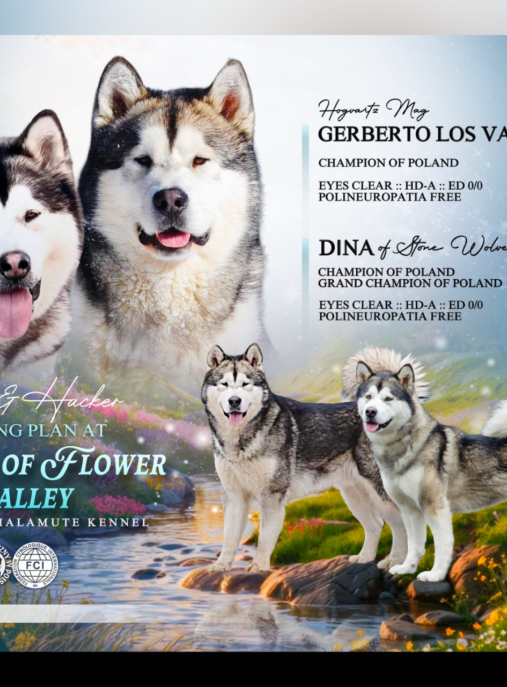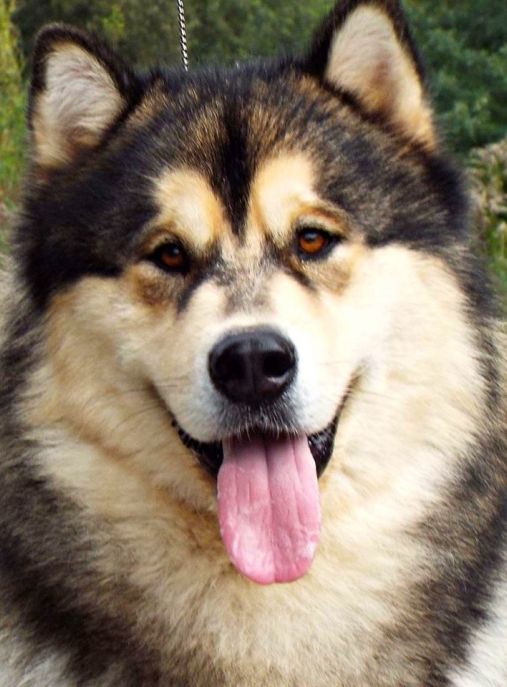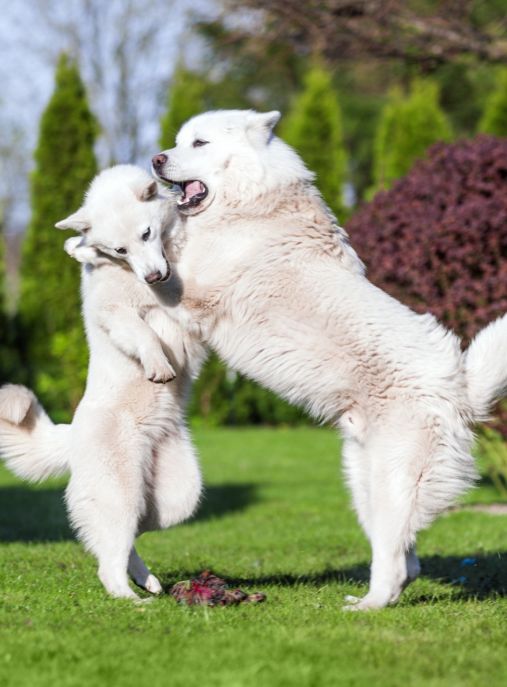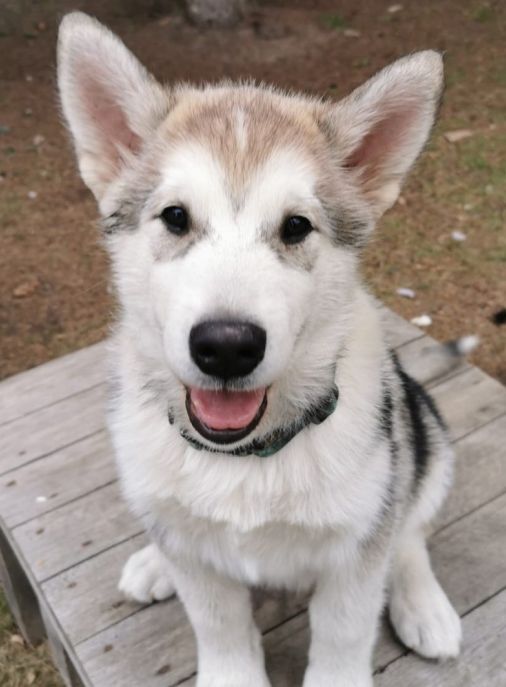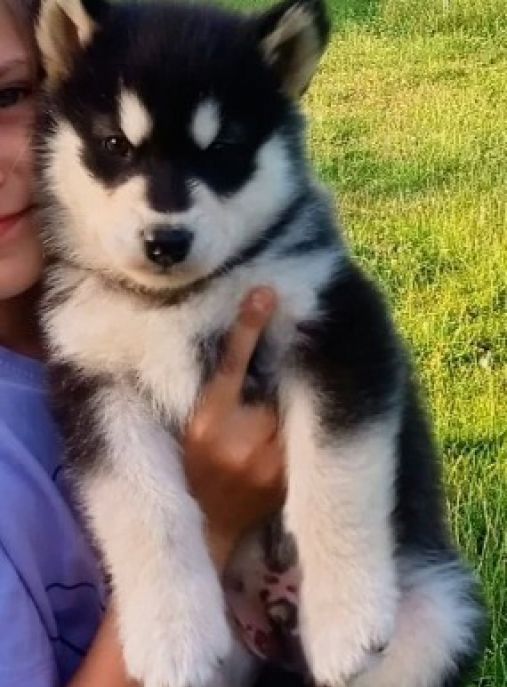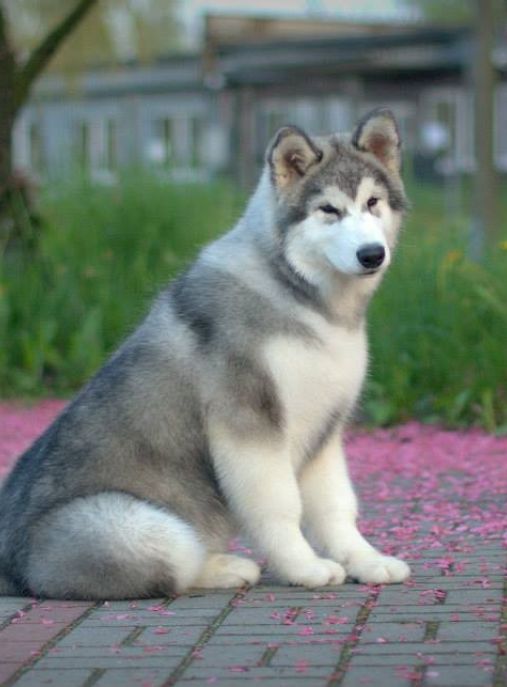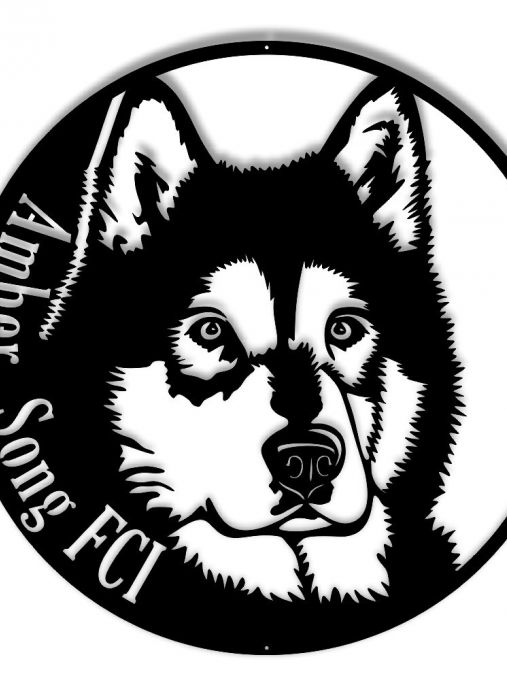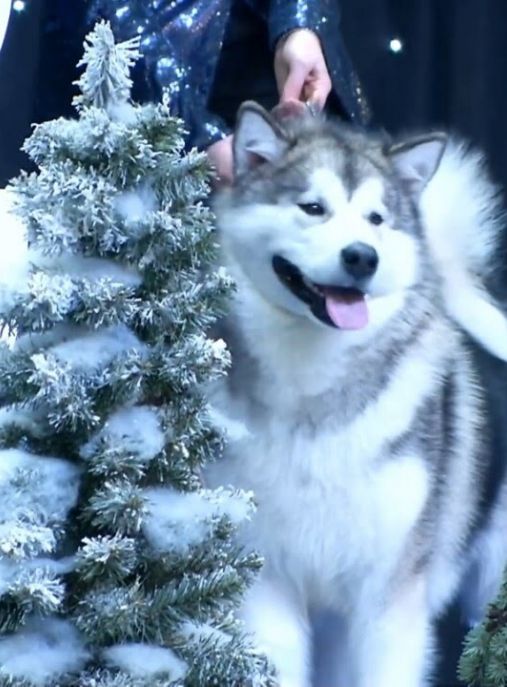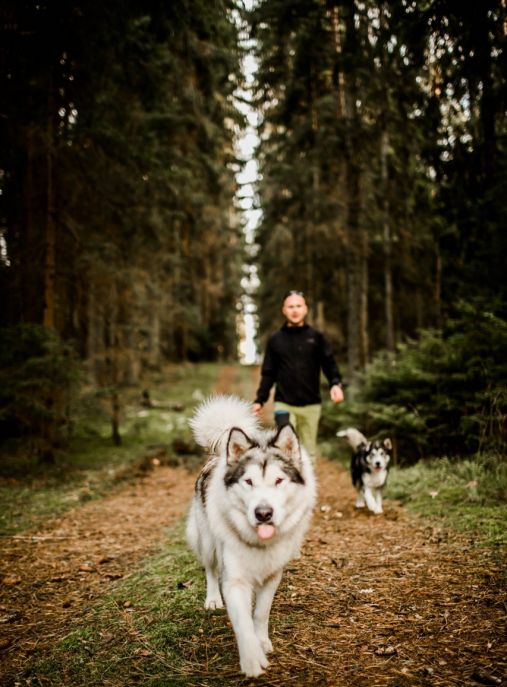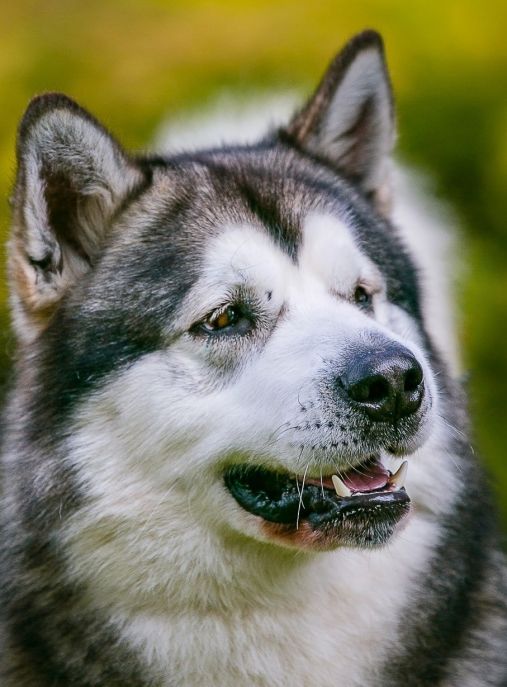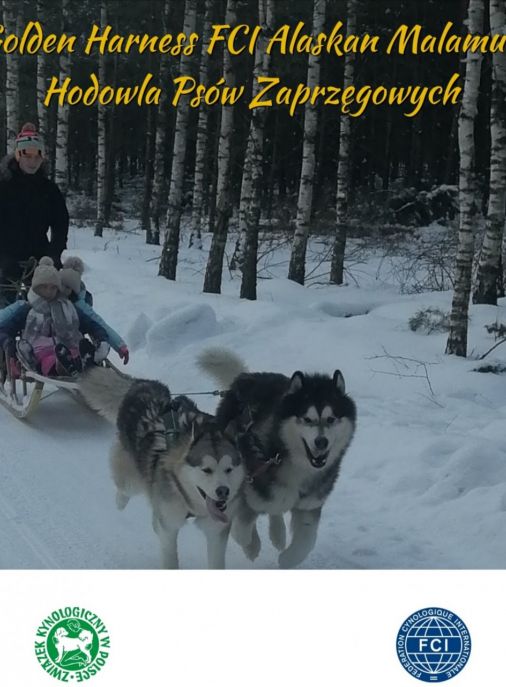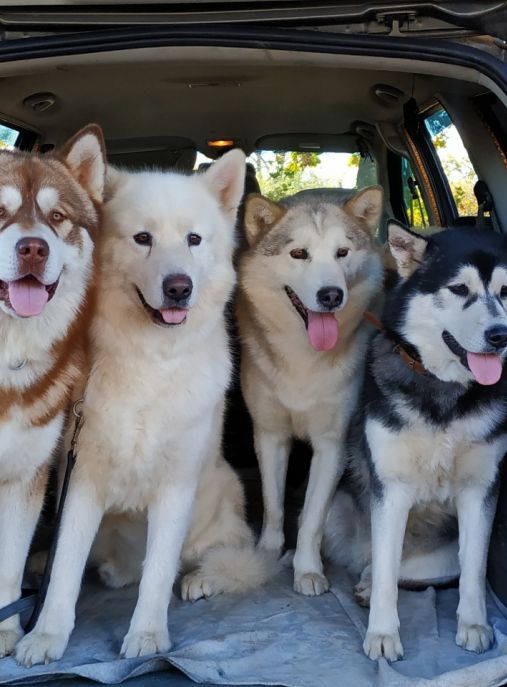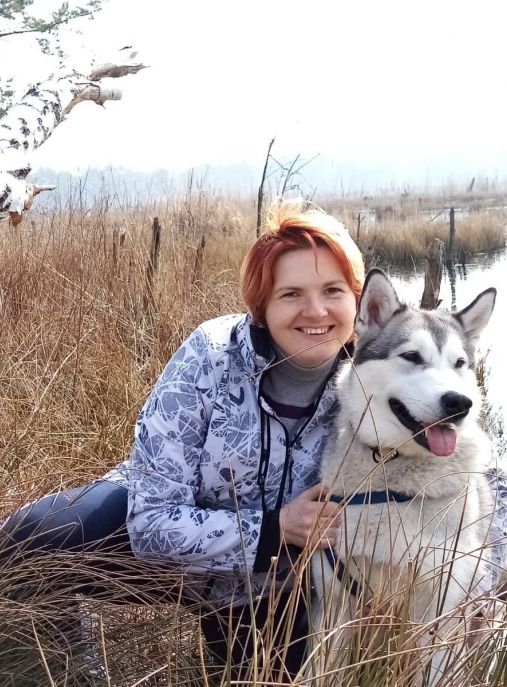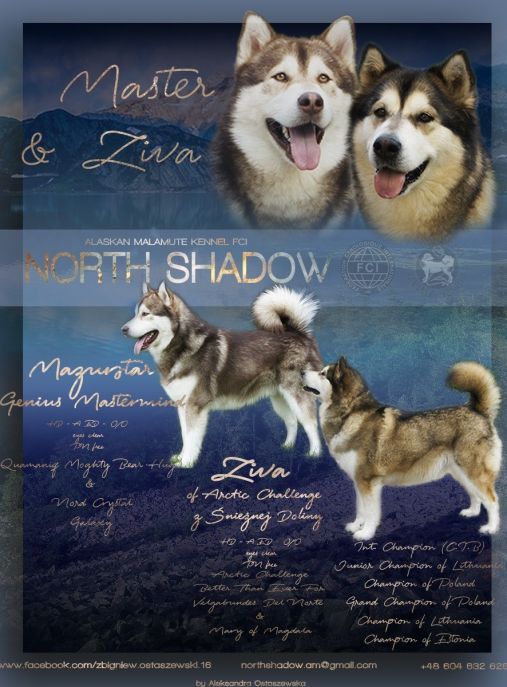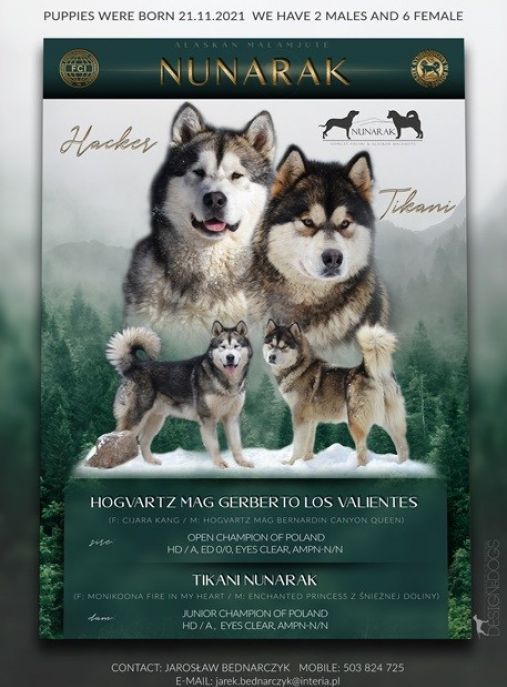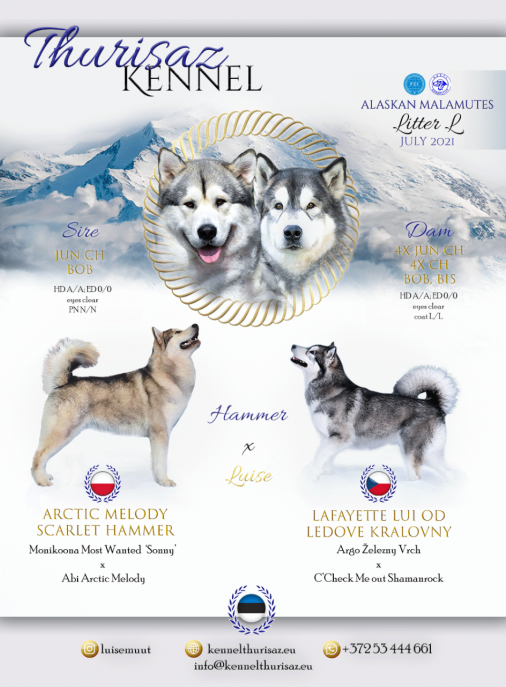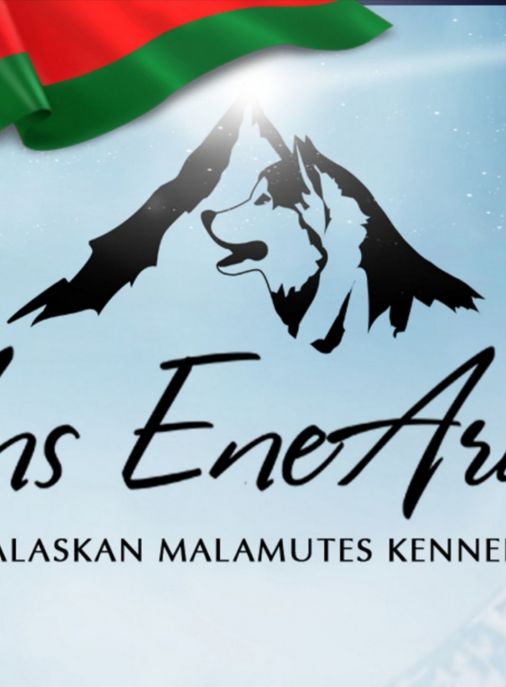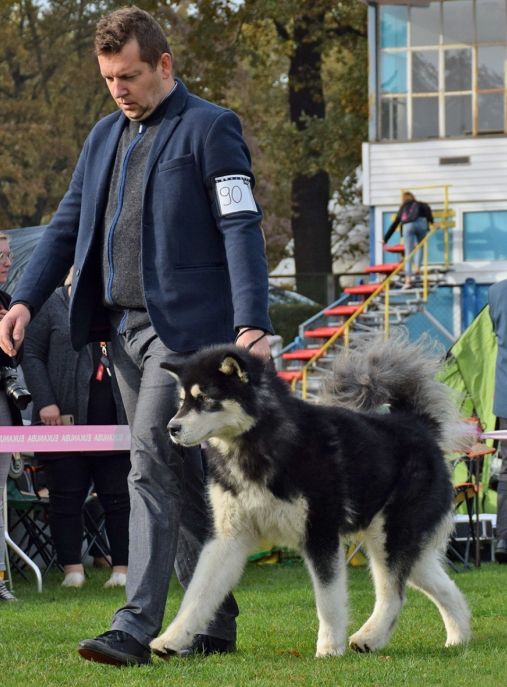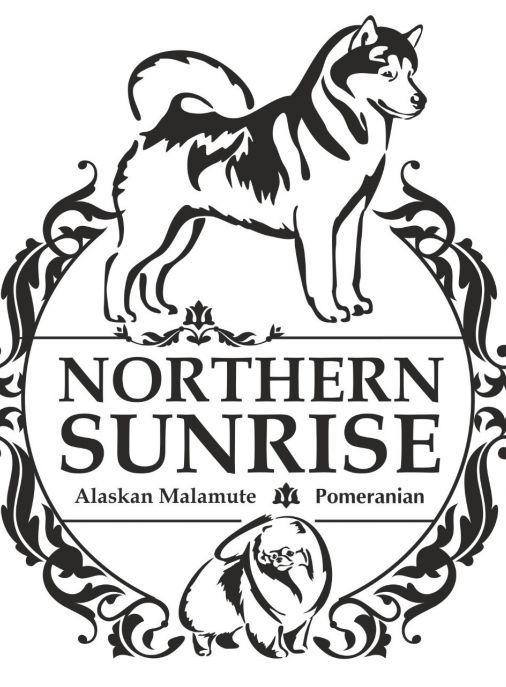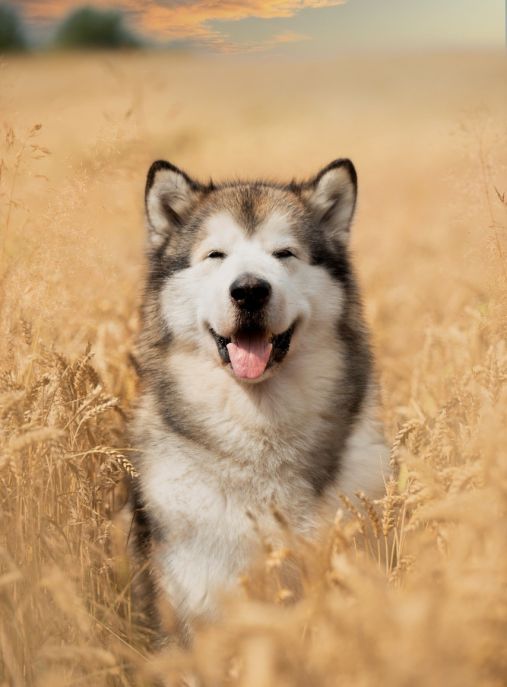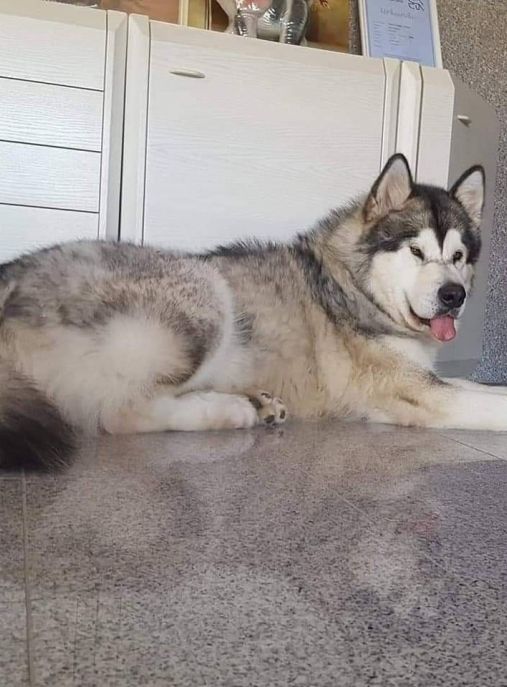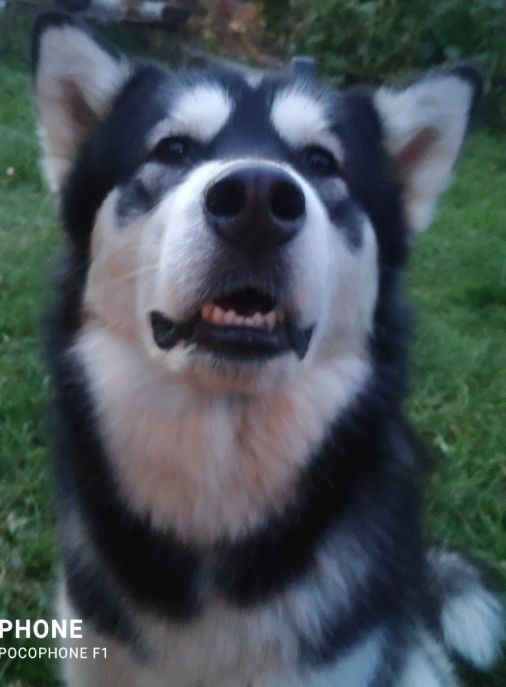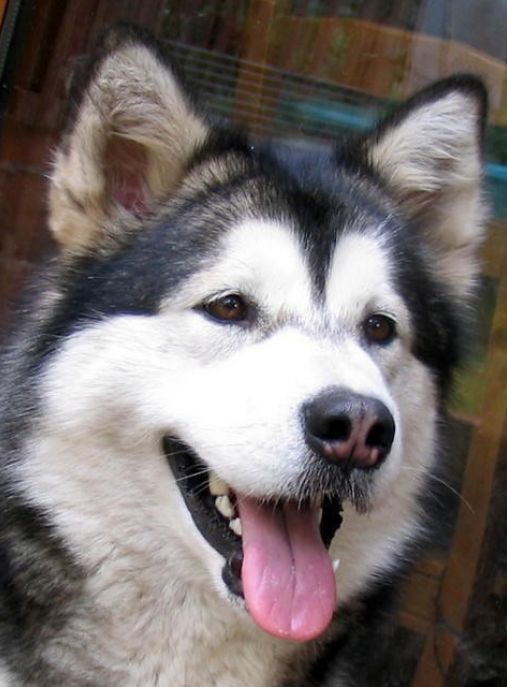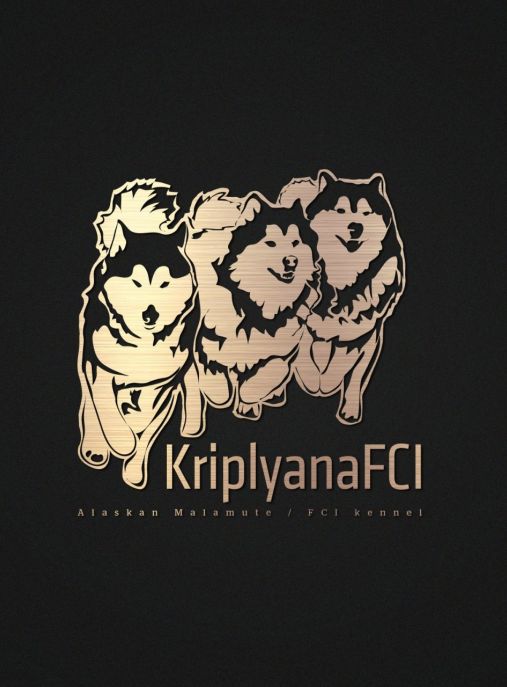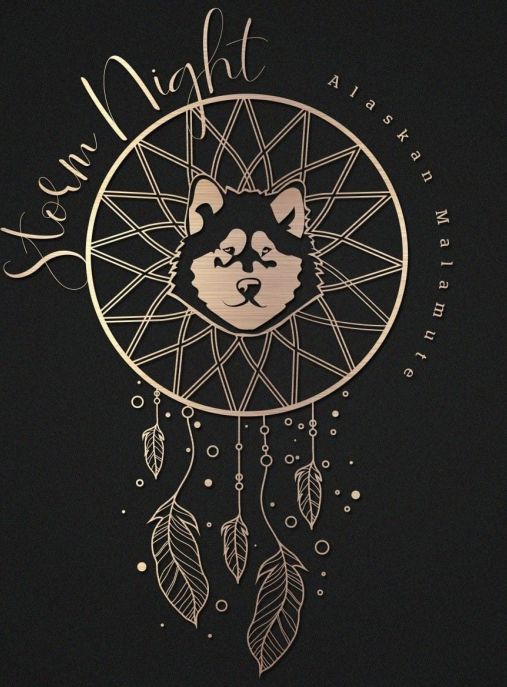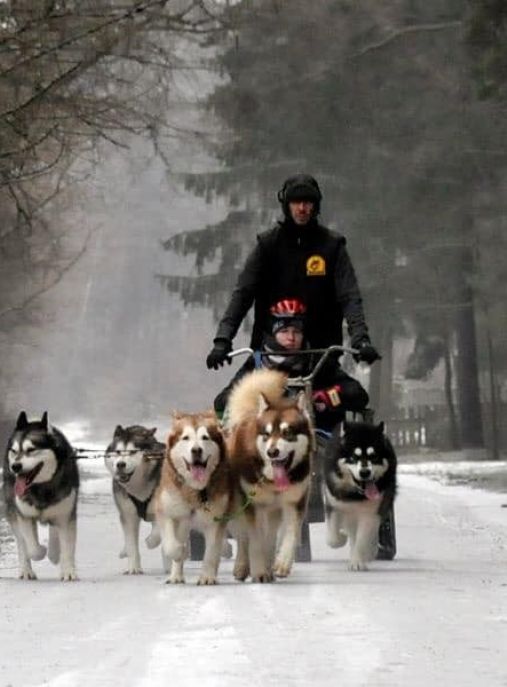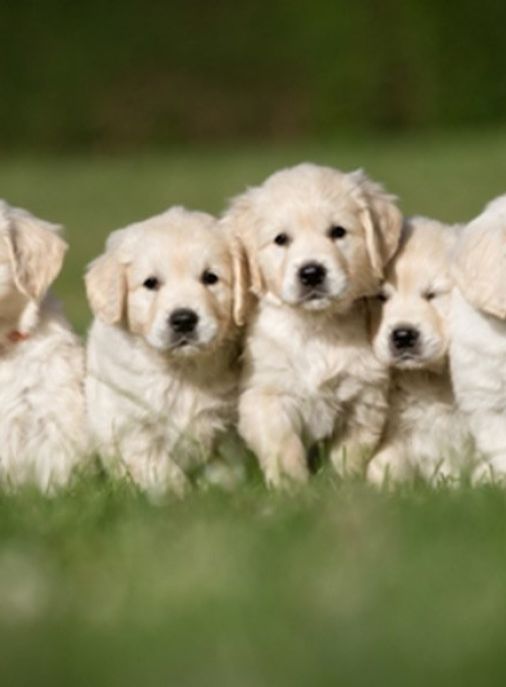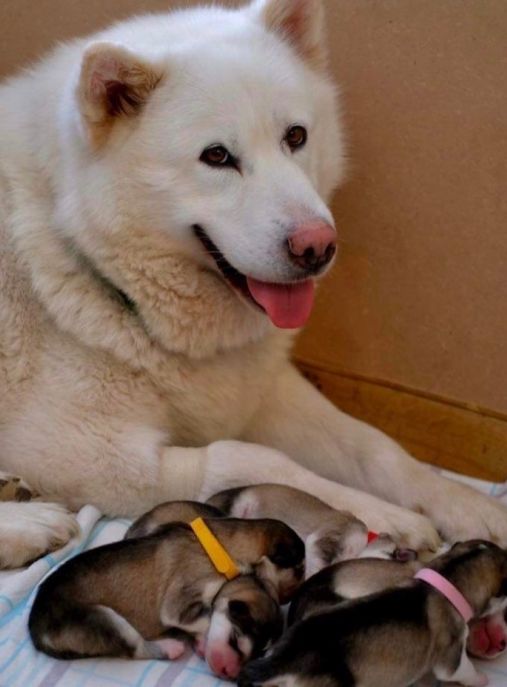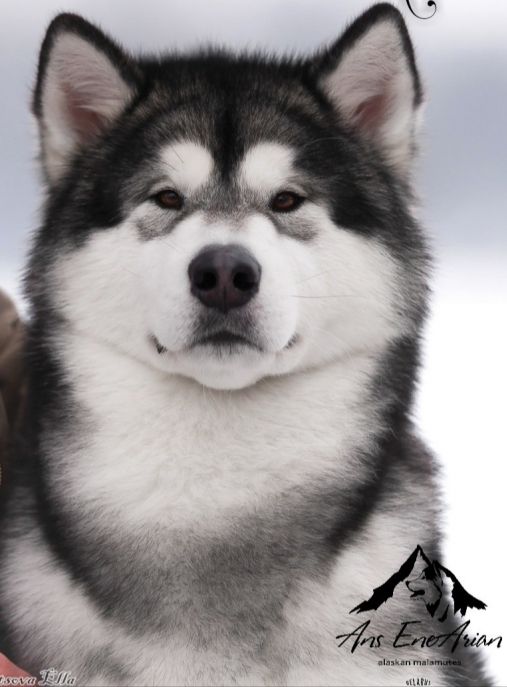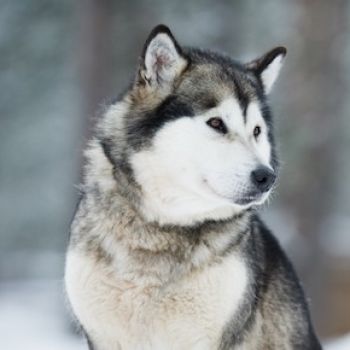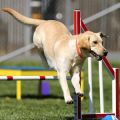The Alaskan Malamute is a majestic and powerful breed of dog that hails from the Arctic regions of Alaska. Known for its strength, endurance, and striking appearance, the Alaskan Malamute is a breed that has captivated dog lovers around the world. With its thick double coat, wolf-like features, and friendly disposition, this breed has become a popular choice for both working and companion purposes.
The history of the Alaskan Malamute dates back thousands of years, as it was originally bred by the native Inuit people of Alaska. These dogs were primarily used for pulling heavy sleds over long distances, as well as for hunting and guarding their owners' camps. The Alaskan Malamute's ability to withstand harsh weather conditions and its incredible strength made it an invaluable asset to the Inuit people's way of life.
According to the FCI (Fédération Cynologique Internationale) typology, the Alaskan Malamute belongs to Group 5, which includes the Spitz and primitive types of dogs. Within this group, the Alaskan Malamute is classified under Section 1, the Nordic Sled Dogs. This section also includes other breeds such as the Siberian Husky and the Samoyed.
The Alaskan Malamute is a highly versatile breed and is suitable for a variety of roles. While it still retains its working abilities, it has also become a beloved family pet and a popular choice for dog sports such as sledding, weight pulling, and agility. Due to its friendly and affectionate nature, the Alaskan Malamute is excellent with children and can make a loyal and devoted companion.
In terms of physical characteristics, the Alaskan Malamute is a large and robust breed. Males typically weigh between 75-85 pounds (34-39 kg), while females weigh slightly less at 65-75 pounds (29-34 kg). The height at the shoulder ranges from 23-25 inches (58-63 cm) for males and 22-24 inches (56-61 cm) for females. The breed's double coat consists of a thick, coarse outer layer and a dense, woolly undercoat, which provides excellent insulation against the cold.
The life expectancy of an Alaskan Malamute is around 10-14 years, although some individuals have been known to live even longer with proper care. It is important to note that this breed requires regular exercise to maintain its physical and mental well-being. Daily walks, playtime, and mental stimulation are essential to prevent boredom and destructive behavior.
One interesting fact about the Alaskan Malamute is its incredible pulling power. These dogs have been known to pull loads of up to 1,000 pounds (450 kg) over long distances, showcasing their impressive strength and endurance. Additionally, the Alaskan Malamute's howl is distinct and can be heard from miles away, adding to its unique charm.
In conclusion, the Alaskan Malamute is a remarkable breed that embodies strength, loyalty, and beauty. With its rich history, versatile abilities, and striking appearance, it is no wonder that this breed has captured the hearts of dog enthusiasts worldwide. Whether as a working dog or a beloved family pet, the Alaskan Malamute continues to leave a lasting impression with its remarkable qualities and unwavering devotion.
The Alaskan Malamute, a majestic and powerful breed, possesses a character as remarkable as its physical appearance. With their striking wolf-like features, these dogs exude an air of confidence and strength. However, beneath their rugged exterior lies a gentle and affectionate nature that endears them to their human companions. Understanding the character of Alaskan Malamutes is crucial in raising and training them effectively.
Known for their friendly and sociable disposition, Alaskan Malamutes are highly affectionate dogs. They thrive on human companionship and are known to form strong bonds with their families. Their loyalty knows no bounds, and they are always eager to please their loved ones. This breed is particularly gentle with children, making them an excellent choice for families.
Despite their friendly nature, Alaskan Malamutes possess an independent streak. They are intelligent and have a strong sense of self, which can sometimes make training a challenge. Patience and consistency are key when it comes to training these dogs. Positive reinforcement techniques, such as treats and praise, work best with Alaskan Malamutes. Harsh training methods or punishment can lead to stubbornness or even aggression.
Alaskan Malamutes have a natural inclination for digging, howling, and chewing. These behaviors are deeply rooted in their heritage as sled dogs. To prevent destructive behavior, it is essential to provide them with ample mental and physical stimulation. Regular exercise is crucial for this breed, as they have high energy levels. Long walks, jogs, or even engaging them in dog sports like agility can help channel their energy in a positive way.
Due to their strong pack instincts, Alaskan Malamutes may exhibit dominant behavior if not properly socialized. Early socialization is vital to ensure they grow up to be well-rounded dogs. Exposing them to various people, animals, and environments from a young age will help them develop into confident and well-behaved adults.
Alaskan Malamutes are known for their vocal nature. They are not excessive barkers but are prone to howling, especially when they are bored or seeking attention. This characteristic should be taken into account, especially if you live in an apartment or have close neighbors.
Grooming an Alaskan Malamute requires regular attention. Their thick double coat protects them from harsh weather conditions, but it also requires regular brushing to prevent matting and to keep shedding under control. Additionally, their ears, teeth, and nails should be regularly checked and maintained.
In conclusion, Alaskan Malamutes are a breed with a unique character. They are friendly, loyal, and affectionate, making them excellent family pets. However, they require patient and consistent training, early socialization, and plenty of exercise to thrive. With the right care and attention, an Alaskan Malamute can become a loving and devoted companion for life.
The Alaskan Malamute is a majestic and powerful breed known for its strength, endurance, and loyalty. Caring for an Alaskan Malamute requires a deep understanding of their unique needs and characteristics. In this comprehensive guide, we will provide you with valuable tips on how to properly care for these magnificent dogs.
First and foremost, it is crucial to understand that Alaskan Malamutes are highly active and energetic dogs. Regular exercise is essential to keep them physically and mentally stimulated. Aim for at least 60-90 minutes of exercise daily, which can include brisk walks, jogging, hiking, or even pulling a sled. A tired Malamute is a happy Malamute, so be prepared to invest time and effort into their exercise routine.
Grooming is another important aspect of Alaskan Malamute care. Their thick double coat requires regular brushing to prevent matting and to remove loose fur. During shedding seasons, which occur twice a year, known as "blowing coat," daily brushing is necessary to manage the excessive shedding. Additionally, their nails should be trimmed regularly, and their ears and teeth should be cleaned to maintain good hygiene.
Alaskan Malamutes are pack animals and thrive on human companionship. They are not suited for a solitary lifestyle and can become bored and destructive if left alone for extended periods. Ensure that you spend quality time with your Malamute, providing mental stimulation through interactive toys, training sessions, and socialization with other dogs and people.
Training is crucial for Alaskan Malamutes, as they are intelligent but can be independent and stubborn. Start training from an early age, using positive reinforcement techniques such as treats, praise, and play. Consistency, patience, and firmness are key to successfully training a Malamute. Socialization is equally important, exposing them to various environments, sounds, and experiences to ensure they grow up to be well-rounded and confident dogs.
When it comes to their diet, Alaskan Malamutes have specific nutritional requirements. Feed them a high-quality, balanced diet that is appropriate for their age, size, and activity level. Consult with a veterinarian to determine the right amount and type of food for your Malamute. Avoid overfeeding, as obesity can lead to various health issues, including joint problems.
While caring for an Alaskan Malamute, there are certain things you should avoid. Firstly, never leave them off-leash in an unsecured area, as their strong prey drive can lead them to chase after small animals. Additionally, avoid exposing them to extreme temperatures, as they are more suited to colder climates. In hot weather, provide them with shade, fresh water, and avoid strenuous exercise during peak heat hours.
Lastly, never resort to harsh training methods or physical punishment with an Alaskan Malamute. They respond best to positive reinforcement and gentle guidance. Harsh treatment can lead to fear, aggression, and a breakdown in the bond between you and your dog.
In conclusion, caring for an Alaskan Malamute requires dedication, time, and understanding. Regular exercise, grooming, socialization, and training are essential for their well-being. By providing them with the love, care, and attention they deserve, you will have a loyal and devoted companion for life.
The Alaskan Malamute, a majestic and powerful breed of dog, is known for its striking and distinctive coat. When it comes to their common color, these magnificent creatures typically exhibit a range of shades that beautifully reflect their Arctic heritage.
The most prevalent color seen in Alaskan Malamutes is a stunning combination of white and gray. The base color of their coat is usually a pure, crisp white, reminiscent of the glistening snow-covered landscapes of their native Alaska. This pristine white serves as a canvas upon which various shades of gray are artfully blended, creating a captivating and eye-catching appearance.
The gray hues found in the Alaskan Malamute's coat can vary in intensity and depth, ranging from a light silver to a darker charcoal. These shades of gray are often distributed in a pattern that accentuates the dog's muscular build and enhances its overall regal appearance. The gray coloration can be seen in different areas of the dog's body, including the back, sides, and sometimes even on the head and face.
In addition to the white and gray combination, Alaskan Malamutes may also exhibit markings or patches of other colors. These markings can appear in shades of black, sable, or red, adding further complexity and visual interest to their coat. These additional colors are typically seen on the dog's face, ears, tail, or legs, creating a striking contrast against the predominantly white and gray background.
It is worth noting that while the white and gray coloration is the most common, Alaskan Malamutes can also come in other colors. Some individuals may have a solid black or solid sable coat, which can be equally captivating and beautiful. However, these solid colors are less prevalent compared to the white and gray combination.
The Alaskan Malamute's coat is not only visually appealing but also serves a practical purpose. Their thick double coat provides insulation and protection against the harsh Arctic climate, allowing them to thrive in freezing temperatures. The outer coat is coarse and water-resistant, while the dense undercoat provides warmth and insulation.
To maintain their stunning appearance, Alaskan Malamutes require regular grooming and brushing to keep their coat clean and free from tangles. Their coat sheds seasonally, with a more significant shedding period occurring twice a year. During these times, extra care and attention are needed to manage the shedding and keep their coat healthy.
In conclusion, the common color of Alaskan Malamute dogs is a captivating combination of white and gray. This striking coat, with its various shades of gray and occasional additional markings, perfectly complements the breed's majestic and powerful stature. Whether seen against a snowy backdrop or in any other setting, the Alaskan Malamute's coat is a true testament to their Arctic heritage and an undeniable source of admiration and awe.
The Alaskan Malamute is a majestic and robust breed known for its strength, endurance, and loyalty. These dogs have a generally good health, but like any other breed, they are prone to certain diseases and require specific care to maintain their well-being.
One of the most common health issues in Alaskan Malamutes is hip dysplasia. This condition occurs when the hip joint doesn't develop properly, leading to discomfort, pain, and eventually arthritis. Regular exercise, a balanced diet, and maintaining a healthy weight can help reduce the risk of hip dysplasia. Additionally, it is advisable to have the parents of a Malamute puppy screened for this condition before breeding.
Another prevalent health concern in this breed is progressive retinal atrophy (PRA). PRA is a degenerative eye disease that leads to vision loss and, in severe cases, blindness. Regular eye examinations by a veterinary ophthalmologist can help detect PRA early on, allowing for appropriate management and care.
Alaskan Malamutes are also prone to hypothyroidism, a condition where the thyroid gland doesn't produce enough hormones. Symptoms include weight gain, lethargy, hair loss, and skin problems. Regular blood tests can help diagnose and manage this condition, and medication can be prescribed to regulate hormone levels.
Gastric dilatation-volvulus (GDV), commonly known as bloat, is a life-threatening condition that can affect Alaskan Malamutes. It occurs when the stomach fills with gas and twists, cutting off blood supply. This condition requires immediate veterinary attention. To reduce the risk of bloat, it is recommended to feed Malamutes smaller meals throughout the day, avoid vigorous exercise after eating, and use elevated feeding bowls.
Maintaining the overall health of Alaskan Malamutes requires a well-rounded approach. Regular exercise is crucial to keep them physically fit and mentally stimulated. These dogs have a high energy level and enjoy activities such as hiking, running, and pulling sleds. Mental stimulation can be achieved through obedience training, puzzle toys, and interactive play.
A balanced diet is essential for the health of Alaskan Malamutes. High-quality dog food that is appropriate for their age, size, and activity level should be provided. It is important to avoid overfeeding to prevent obesity, which can lead to various health issues.
Regular veterinary check-ups are vital to monitor the overall health of Alaskan Malamutes. Vaccinations, parasite prevention, dental care, and routine blood tests should be part of their healthcare regimen. Additionally, grooming is essential to keep their thick double coat in good condition. Regular brushing helps remove loose hair and prevents matting.
In conclusion, while Alaskan Malamutes are generally healthy dogs, they are prone to certain conditions such as hip dysplasia, PRA, hypothyroidism, and bloat. Providing regular exercise, a balanced diet, and routine veterinary care are essential for their well-being. By taking these precautions and being attentive to their specific needs, Alaskan Malamute owners can ensure their beloved companions lead long, healthy, and happy lives.
The Alaskan Malamute is a majestic and powerful breed known for its strength and endurance. To maintain their optimal health and well-being, it is crucial to provide them with a well-balanced and nutritious diet. Proper nutrition plays a vital role in supporting their energy levels, maintaining a healthy weight, and promoting overall longevity. Here is some advice on how and what to feed Alaskan Malamute dogs, along with a list of things to avoid.
Feeding an Alaskan Malamute should start with high-quality dog food that meets their specific nutritional needs. Look for a premium dog food brand that lists real meat as the first ingredient, such as chicken, beef, or fish. Avoid foods that contain fillers, by-products, or artificial additives, as these can be detrimental to their health.
Protein is an essential component of an Alaskan Malamute's diet, as it helps support their muscle development and repair. Aim for a dog food that contains at least 25-30% protein. Additionally, healthy fats are crucial for their coat and skin health, so ensure the food contains a moderate amount of high-quality fats, such as omega-3 and omega-6 fatty acids.
Alaskan Malamutes are active dogs, so they require a diet rich in carbohydrates to fuel their energy levels. Look for dog foods that include whole grains like brown rice, oats, or quinoa. These complex carbohydrates provide sustained energy and help prevent blood sugar spikes.
It is important to feed Alaskan Malamutes in appropriate portion sizes to prevent obesity. Follow the feeding guidelines provided by the dog food manufacturer, but keep in mind that individual dogs may have different needs based on their age, activity level, and metabolism. Monitor their weight regularly and adjust the portion sizes accordingly.
In addition to commercial dog food, you can supplement your Alaskan Malamute's diet with fresh, whole foods. Lean meats like chicken or turkey, cooked eggs, and fish can be added to their meals to provide extra protein. Fruits and vegetables like carrots, blueberries, and sweet potatoes can be given as healthy treats or mixed into their food for added vitamins and minerals.
While it is important to provide a balanced diet, there are certain foods that should be avoided as they can be toxic to dogs. These include chocolate, grapes, raisins, onions, garlic, and foods containing xylitol (a sugar substitute). Additionally, avoid feeding your Alaskan Malamute bones, as they can splinter and cause choking or internal injuries.
Proper hydration is also crucial for Alaskan Malamutes, especially during hot weather or periods of intense exercise. Always ensure they have access to fresh, clean water throughout the day.
Lastly, it is essential to consult with a veterinarian to ensure you are meeting your Alaskan Malamute's specific nutritional needs. They can provide guidance on the best diet for your dog based on their age, weight, and any specific health concerns.
In conclusion, feeding an Alaskan Malamute a well-balanced and nutritious diet is vital for their overall health and well-being. Choose high-quality dog food with real meat as the main ingredient, provide appropriate portion sizes, and supplement with fresh, whole foods. Avoid toxic foods and always prioritize your dog's hydration. By following these guidelines and consulting with a veterinarian, you can ensure your Alaskan Malamute receives the nutrition they need to thrive.
